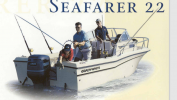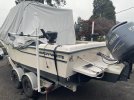- Joined
- May 6, 2018
- Messages
- 26
- Reaction score
- 0
- Points
- 1
So a friend of mine sold his 360 express a few years back because the fiberglass was starting to blow out under the aluinum transom angle plate. Since his sale all I keep hearing about Grady wet and all its moisture issues with this brand. So im trying to ignore the chatter and still love the look and performance of a grady so I took a look at a 2009 306 Bimini for sale by me locally and low and behold im seeing the same transom problems. The 360 Express was an 06, the bimini was a 09. What year is it safe to buy a grady, what models, and what years can I feel confident im not going to have the same "grady wet" issues when im ready to resell? What a PIA for such a reputable company for boats that dont come cheap? I dont hear these comments from other well known brands just with Grady.



